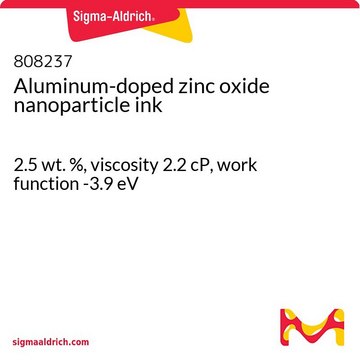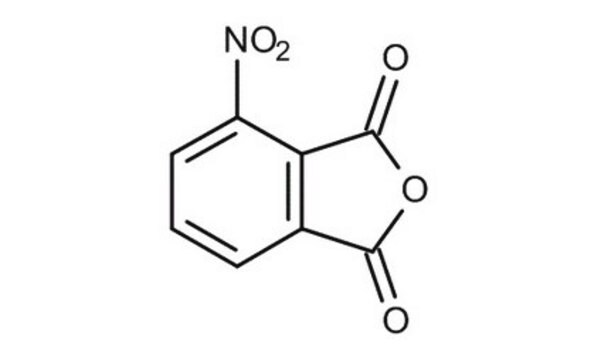289744
Cerium(IV) oxide, dispersion
20 wt. % colloidal dispersion in 2.5% acetic acid, 30-50 nm avg. part. size
Sign Into View Organizational & Contract Pricing
All Photos(2)
About This Item
Linear Formula:
CeO2
Molecular Weight:
172.11
MDL number:
UNSPSC Code:
12352303
PubChem Substance ID:
NACRES:
NA.23
Recommended Products
Quality Level
form
dispersion
reaction suitability
reagent type: catalyst
core: cerium
greener alternative product characteristics
Design for Energy Efficiency
Learn more about the Principles of Green Chemistry.
sustainability
Greener Alternative Product
avg. part. size
30-50 nm
pH
~2.7
viscosity
10 cP(lit.)
density
1.22 g/mL at 25 °C
greener alternative category
SMILES string
O=[Ce]=O
InChI
1S/Ce.2O
InChI key
CETPSERCERDGAM-UHFFFAOYSA-N
Looking for similar products? Visit Product Comparison Guide
General description
We are committed to bringing you Greener Alternative Products, which adhere to one or more of The 12 Principles of Greener Chemistry. This product is intended for Molecular Solar Thermal Energy Storage Systems (MOST) and has been enhanced for energy efficiency. Click here for more information.
Storage Class Code
10 - Combustible liquids
WGK
WGK 1
Flash Point(F)
Not applicable
Flash Point(C)
Not applicable
Personal Protective Equipment
dust mask type N95 (US), Eyeshields, Gloves
Choose from one of the most recent versions:
Already Own This Product?
Find documentation for the products that you have recently purchased in the Document Library.
Vishal Shah et al.
PloS one, 7(10), e47827-e47827 (2012-10-31)
Cerium oxide nanoparticles have found numerous applications in the biomedical industry due to their strong antioxidant properties. In the current study, we report the influence of nine different physical and chemical parameters: pH, aeration and, concentrations of MgSO(4), CaCl(2), KCl
Hailong Li et al.
Journal of hazardous materials, 243, 117-123 (2012-11-08)
MnO(x)-CeO(2) mixed-oxide supported on TiO(2) (Mn-Ce/Ti) was synthesized by an ultrasound-assisted impregnation method and employed to oxidize elemental mercury (Hg(0)) at 200°C in simulated coal combustion flue gas. Over 90% of Hg(0) oxidation was achieved on the Mn-Ce/Ti catalyst at
Cecilia Mondelli et al.
Chimia, 66(9), 694-698 (2012-12-06)
The heterogeneously catalyzed gas-phase oxidation of HCl to Cl(2) offers an energy-efficient and eco- friendly route to recover chlorine from HCl-containing byproduct streams in the chemical industry. This process has attracted renewed interest in the last decade due to an
Lijuan Zhao et al.
ACS nano, 6(11), 9615-9622 (2012-10-12)
The rapid development of nanotechnology will inevitably release nanoparticles (NPs) into the environment with unidentified consequences. In addition, the potential toxicity of CeO(2) NPs to plants and the possible transfer into the food chain are still unknown. Corn plants (Zea
Peng Zhang et al.
ACS nano, 6(11), 9943-9950 (2012-10-27)
Biotransformation is a critical factor that may modify the toxicity, behavior, and fate of engineered nanoparticles in the environment. CeO(2) nanoparticles (NPs) are generally recognized as stable under environmental and biological conditions. The present study aims to investigate the biotransformation
Our team of scientists has experience in all areas of research including Life Science, Material Science, Chemical Synthesis, Chromatography, Analytical and many others.
Contact Technical Service







